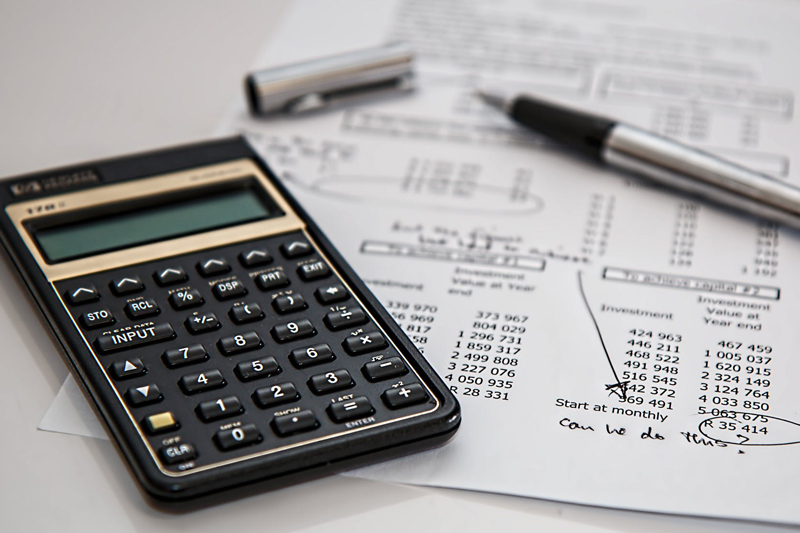How to Find Common Factors

Example 1: Find the common factors of 36 and 28
If you need help on how to find prime factors of a number, please refer to article at the end of this article.
Step 1: Find factors of 36.
First determine the prime factorization of 36. 36 = 2 x 2 x 3 x 3.
The prime factors of 36 can be used to find all factors of 36. To begin, start with 1.
1 x 36 (next, list the first prime, 2)
2 x 18 (cover up the 2 in the factorization and multiply the remaining factors to find the other factor, 18)
3 x 12 (Is there a 3 in the prime factorization? Yes. Cover up the 3, and multiply the remaining factors to get 12.
4 x 9 (Is there a 4? Of course not, but can you multiply any of the numbers in the factorization together
to get 4? Yes, “2 x 2”. Thus, cover up “2 x 2”, and multiply the remaining factors to get 9.
Can you get a 5? No.
6 x 6 (Can you combine to prime factors to get 6? Yes. Cover up “2 x 3” and multiply the remaining factors to get 6.
Can you get a 9? Yes, but this is a factor already listed or a repeat. Thus, you have found all the factors.
So, the factors for 36 are 1, 2, 3, 4, 6, 9, 12, 18, and 36.
Step 2: Find all the factors of 28
First determine the prime factorization of 28. The prime factorization of 28 = 2 x 2 x 7.
The prime factors of 28 can be used to find all factors of 28. To begin, start with 1.
1 x 28 (next, list the first prime, 2)
2 x 14 (cover up the 2 in the factorization and multiply the remaining factors to find the other factor, 14)
(Is there a 3 in the prime factorization? No)
4 x 7 (Is there a 4? Of course not, but can you multiply any of the numbers in the factorization together to get 4? Yes, “2 x 2”. Thus, cover up “2 x 2”, and multiply the remaining factors to get 7.)
Can you get a 5? No.
Is it possible to get a 6? No.
Is there a 7? Yes. (Cover up the 7 in the factorization and multiply the remaining factors to find the other factor, 4.)
Can you derive 8, 9, 10, 11, 12, or 13? No. (Continue until a factor has been repeated.)
Can you get a “14”? Yes, by multiplying 2 and 7, but the factor, 14, is already listed. Thus, you have found all the factors.
So, the factors for 28 are 1, 2, 4, 7, and 14.
Step 3: Identify the common factors.
Factors of 36: 1, 2, 3, 4, 6, 9, 12, 18, 36
Factors of 28: 1, 2, 4, 7, 14, 28
*****The common factors of 36 and 28 are 1, 2, and 4.
If you need help on how to find prime factors of a number, please refer to article at the end of this article.
Step 1: Find factors of 36.
First determine the prime factorization of 36. 36 = 2 x 2 x 3 x 3.
The prime factors of 36 can be used to find all factors of 36. To begin, start with 1.
1 x 36 (next, list the first prime, 2)
2 x 18 (cover up the 2 in the factorization and multiply the remaining factors to find the other factor, 18)
3 x 12 (Is there a 3 in the prime factorization? Yes. Cover up the 3, and multiply the remaining factors to get 12.
4 x 9 (Is there a 4? Of course not, but can you multiply any of the numbers in the factorization together
to get 4? Yes, “2 x 2”. Thus, cover up “2 x 2”, and multiply the remaining factors to get 9.
Can you get a 5? No.
6 x 6 (Can you combine to prime factors to get 6? Yes. Cover up “2 x 3” and multiply the remaining factors to get 6.
Can you get a 9? Yes, but this is a factor already listed or a repeat. Thus, you have found all the factors.
So, the factors for 36 are 1, 2, 3, 4, 6, 9, 12, 18, and 36.
Step 2: Find all the factors of 28
First determine the prime factorization of 28. The prime factorization of 28 = 2 x 2 x 7.
The prime factors of 28 can be used to find all factors of 28. To begin, start with 1.
1 x 28 (next, list the first prime, 2)
2 x 14 (cover up the 2 in the factorization and multiply the remaining factors to find the other factor, 14)
(Is there a 3 in the prime factorization? No)
4 x 7 (Is there a 4? Of course not, but can you multiply any of the numbers in the factorization together to get 4? Yes, “2 x 2”. Thus, cover up “2 x 2”, and multiply the remaining factors to get 7.)
Can you get a 5? No.
Is it possible to get a 6? No.
Is there a 7? Yes. (Cover up the 7 in the factorization and multiply the remaining factors to find the other factor, 4.)
Can you derive 8, 9, 10, 11, 12, or 13? No. (Continue until a factor has been repeated.)
Can you get a “14”? Yes, by multiplying 2 and 7, but the factor, 14, is already listed. Thus, you have found all the factors.
So, the factors for 28 are 1, 2, 4, 7, and 14.
Step 3: Identify the common factors.
Factors of 36: 1, 2, 3, 4, 6, 9, 12, 18, 36
Factors of 28: 1, 2, 4, 7, 14, 28
*****The common factors of 36 and 28 are 1, 2, and 4.
You Should Also Read:
Prime Factorization
Find All Factors
Kiss My Math

Related Articles
Editor's Picks Articles
Top Ten Articles
Previous Features
Site Map
Content copyright © 2023 by Beverly Mackie. All rights reserved.
This content was written by Beverly Mackie. If you wish to use this content in any manner, you need written permission. Contact Beverly Mackie for details.




